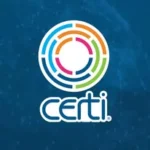In the series of articles about Digital Signal Processing on the Insights blog we first presented an overview of this field of competence at CERTI, and we then focused specifically on applications in digital agriculture. In the first article we mentioned the importance of digital signal processing in the field of digital healthcare and we now explore in greater detail the biomedical applications of this technology.
To begin, a bit of history!
The first scientist recognized for measuring a bio-electrical current was the Italian Carlo Matteucci, who in 1838 recorded currents generated by muscle contractions. Other pioneers of experiments in bioelectromagnetism were the German physiologist Emil du Bois-Reymond, who in 1842 was able to detect electrical currents passing through nerves; the English neurophysiologist Richard Caton, who in 1875 recorded voltage generated by brain activity; and English researcher, Augustus Waller, who in 1887 placed electrodes on a patient’s chest to record voltage generated by cardiac activity. Although not based on bioelectromagnetism, the discovery of X rays in 1895 by the German physicist and mechanical engineer Wilhelm Röntgen is another important mark in the primordial epoch of modern medical technology. These scientific discoveries led to the development of the first analog electromedical equipment to assist diagnosis. Only one year after Röntgen’s discovery, the Siemens and General Electric companies were selling X-ray devices. The electrocardiogram was presented in 1903 by Dutch researcher Willem Einthoven, the electroencephalogram in 1924 by German psychiatrist Hans Berger and the electromyograph in 1942 by Canadian Herbert Jasper. In the 1960s, the first analog ultrasound equipment appeared, capable of forming images from echoes generated by variations in acoustic impedance in internal anatomical structures.
The digitization of electromedical equipment
Digital processing of biomedical signals began when computers became more available to the scientific community after World War II. In the late 1950s researchers at George Washington University and the Massachusetts Institute of Technology (MIT) published the first algorithms for the analysis of electrocardiograms and electroencephalograms. Medical images also began to be digitized and processed by computer for morphological cellular analysis and automatic counting of bacterial cultures in the 1950s. In general, the processing of biomedical signals and images consists in the application of algorithms, to execute mathematical operations on biological and medical data, usually collected from a patient with sensors. Typically, the data are first submitted to pre-processing operations, such as digital filtering to reduce noise levels, and then algorithms are applied to extract parameters relevant to the medical diagnosis. In the case of electrocardiograms, for example, the parameters can be the temporal intervals between certain points of the waveform, the fractal dimension of the signal or the energy of the wavelet coefficients on a given scale. The last step is the identification of patterns and or the classification of measurements of the parameters into classes that correspond to conditions considered to be normal and abnormal. Once again using the case of electrocardiograms, the classes of abnormal conditions can correspond to myocardial infarction, tachycardia, extrasystole and other arrhythmias, for example.
In the 1970s, the use of embedded processors allowed the rise of digital versions of analog electromedical equipment developed in the first half of the century. Many analyses could be conducted in real time that were previously only possible through the post-processing of the signals in large computers. Data collected could be stored more efficiently and practically than in the previously used graphs printed on rolls of paper. In addition to the electrocardiographs, electroencephalographs and electromyographs, various other digital electromedical equipment and processes derived from the analogic predecessors make extensive use of digital signal processing, such as sphygmometers (for measuring blood pressure), oximeters (to measure oxygen concentration in the blood), photoplethysmograms (to optically measure cardiac rhythm), electrooculography (ocular movements), electroretinography (response of the retina to luminous stimuli) and spirometers (lung capacity). There are also monitors of vital signs that combine the functions of two or more of these devices. Digital signal processing also performs an essential role in assistive medical technology as in digital hearing aids, cochlear implants, voice synthesizers and others.
The revolution in digital medical imaging
Currently, equipment for assisted diagnosis by images are one of the main applications of digital signal processing in healthcare. Among them, digital radiography equipment and digital sonograms are derived from analogical precursors, but have much higher performance. Other devices do not have analogic predecessors and arose only thanks to the advent of digital signal processing, which can therefore be considered as the technology that made them viable. As mentioned in the first article of this series, the common principle of these devices is the use of partial information found in uni- or bidimensional signals to compose signals of superior dimensions, based on a technique known as computerized tomography and others derived from it. The name comes from the Greek terms tomos + graphō = design of a section, because the result of the processing is usually an image representing the density of tissues or another physiological property of a planar section of the patient’s body, without the superimposition of images that occurs in the conventional radiography. Initially developed in the 1960s and 1970s, this technology provoked a true revolution in medical imaging. Some of the researchers responsible for its development include Allan Cormack and Godfrey Hounsfeld, whose pioneer work was recognized with the Nobel Prize in medicine in 1979.
In computerized tomography (also known as axial computerized tomography) the image is formed by signals from X-rays captured by unidimensional sensors placed around the patient’s body. A similar technology is used in magnetic resonance imaging (MRI) devices, which use magnetic fields and radio waves and not X-rays, avoiding exposure to ionizing radiation and its possible harmful effects. Although magnetic resonance is in general preferable, computerized tomography is better for certain types of exams and continues to be used today. Other technologies derived from computerized tomography are positron emission tomography (PET), which is used to observe corporal metabolic processes; magnetic resonance by diffusion, used to obtain information about the nervous system, such as three-dimensional models of neural connections in the brain, optical tomography, functional magnetic resonance, angio-tomography and others.
Taking the laboratory to the patient
Digital processing of signals and images is also a key technology to the development of electromedical devices that allow conducting clinical analyses quickly and nearly anywhere. They are devices made to conduct in vitro tests at the point of care, such as doctor’s offices, health clinics or even in ambulances, residences or locations served by community healthcare agents. This means that patients do not need to go to a laboratory for clinical analyses and that biological samples collected do not need to be sent to a laboratory to conduct the exam. This offers important benefits: doctors can complete diagnoses and prescribe treatments during consultation; community healthcare agents can quickly conduct triage and send patients for treatment; in certain cases, patients can control their own treatment more precisely, as for example diabetics who use tests to measure blood glucose levels. These devices can be very useful in hospitals, where even if there is a laboratory for clinical analyses, faster results in an intensive care or emergency ward can be decisive in critical situations, as in the treatment of sepsis, in which the probability of a patient’s survival decreases in the time it takes to identify infectious agents.
Recently, the well-known XPRIZE Foundation conducted a technological competition for the experimental development of a portable device for the diagnosis of 12 diseases and record five vital signs in real time, known as the Tricorder (in an allusion to a device used on a television science fiction series). The importance of the development of these devices for point of care diagnosis is attested by its choice as an object of this XPRIZE Foundation competition, whose other recent challenges include sending a probe to the moon by a private entity and reducing the time and cost needed for sequencing the human genome.
As an example of this application of digital signal processing we can mention the Technology Platform for Point of Care Diagnostics for Tropical Diseases (PodiTRodi) project, in which a consortium of 13 Brazilian and European institutions, including CERTI Foundation, CTI, Unicamp, the Fundação Oswaldo Cruz (Fiocruz)/Instituto de Biologia Molecular do Paraná (IBMP) and the Fraunhofer Institute ENAS, developed the prototype of a device for diagnosis of Chagas disease at the point of care. The device conducts an immunoassay combined with a test of nucleic acids by polymerase chain reaction (PCR) in a discardable microfluidic cartridge, to detect the presence of the parasite Trypanosoma cruzi both in both the initial acute phase of infection and in the chronic phase of the disease. [1] An embedded computer vision system captures and analyzes images from the reagent chambers of the cartridge, automatically providing the test result. Another example of a project in this field is the cooperation between CERTI, UFSC, MIT and Fiocruz/IBMP to develop a platform for embedded microscopy based on digital in-line holography.[2] Because it does not need lenses, this platform is robust, light and compact, which makes it particularly attractive for use in portable devices for point of care diagnosis.
To Learn More
Cobra, D. T. e Costa, A. D. T., Tecnologia para diagnóstico no ponto de atendimento. Revista Polyteck, nº 14, outubro de 2015, pp. 3-6.
Najarian, K. e Splinter, R., Biomedical Signal and Image Processing, 2nd Ed. CRC Press, Boca Raton, FL, USA, 2012.
Nebeker, F., Golden Accomplishments in Biomedical Engineering. IEEE Engineering in Medicine and Biology Magazine, Vol. 21, No. 3, pp. 17-47, May-Jun 2002.
Sobieranski, A. C. et al., Portable Lensless Wide-field Microscopy Imaging based on Digital In-line Holography and Multi-Frame Pixel Super-Resolution, Light: Science & Applications, Vol. 4, e346, Oct. 2015.
[1] Processo CNPq Nº 590.032/2011-9 e FP7 Nº 287.770
[2] Processo CNPq Nº 551.967/2011-0









